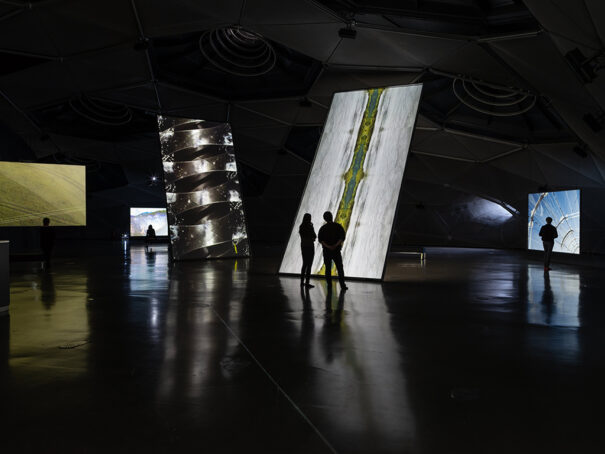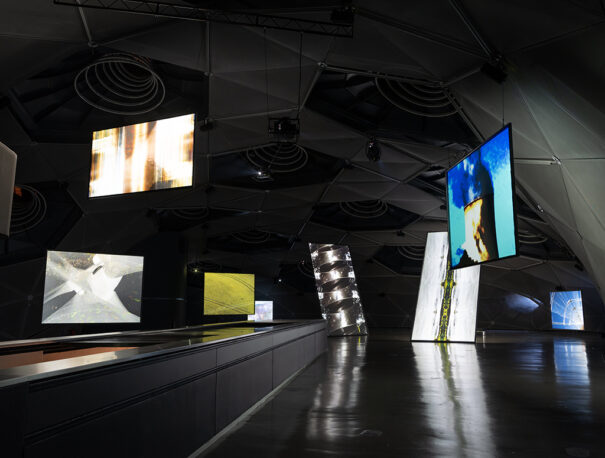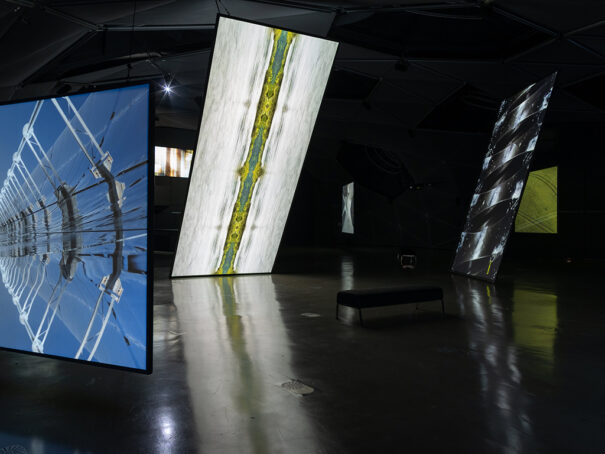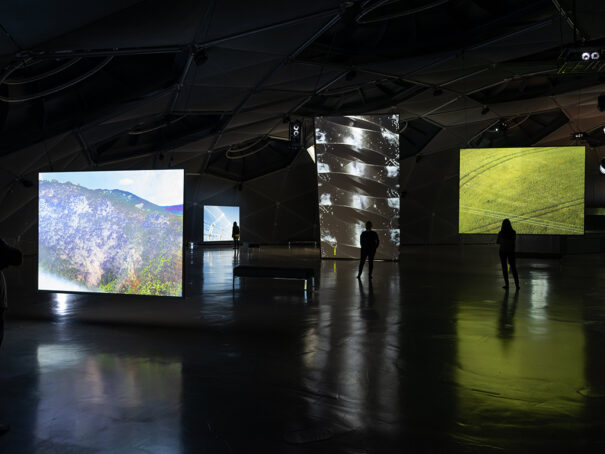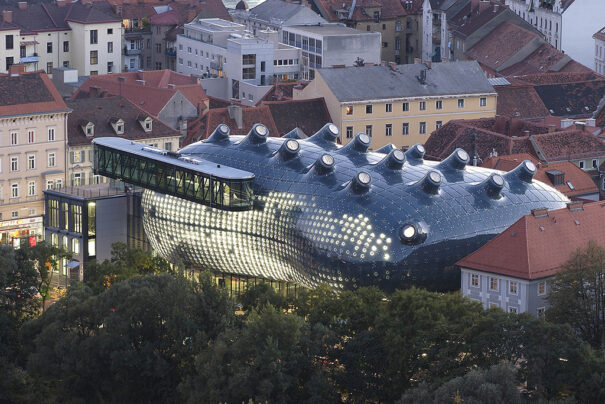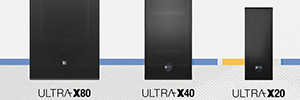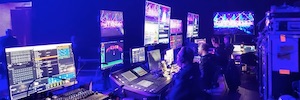Meyer Sound Debuts Spacemap Go with Bill Fontana's Work
The exhibition 'Primal Energies' by this sound artist is made up of eight large-format screens and 64 Powered speakers. The sensory impact is enhanced by dynamic spatial sound movements, created and automated that are created using new technology.
A new exhibition by renowned sound artist Bill Fontana, Entitled Primal Energies, was inaugurated on 1 at the Museum Kunsthaus Graz in Austria.
Occupying the Space gallery 01 ovoid dome, Primal Energies It pays homage to the future of renewable energy through a mix of video footage and evocative soundscapes portraying the expansion of wind resources, Solar, hydroelectric and geothermal of our planet.
While the images are displayed on the eight large-format screens, Visitors are immersed in an evocative mix of sounds played by 64 powered speakers Meyer Sound, brand that distributes in Spain RMS Pro Audio.
The sensory impact of the installation is enhanced by the dynamic movements of spatial sound, created and automated using a beta version of Spacemap Go technology.
The sounds and images of the work were recorded by Fontana with the assistance of Scott George, Company Autograph Sound based in London.
During the preparatory period, Fontana and George were recruited to serve as beta testers for Spacemap Go, a spatial sound design and mixing tool that leverages the processing of the Galaxy network platform, providing an easy-to-use interface for multi-channel panning using one or more iPads, connected to systems that include multiple Galaxy processors.
"Spacemap Go is the digital brain behind everything that's going on with dynamic sound spatialization. It allows me to do everything I used to do with the D-Mitri system, but working directly with Galaxy makes it much more cost-effective, especially if you're planning something like a permanent installation in a museum or architectural setting.", says Fontana.
Fontana was also impressed by the creative freedom offered by the intuitive iPad app of Meyer Sound's new technology. "We use the iPad to set up everything in the venue. We wanted to create a kind of sonic choreography through space, and the flexibility of Spacemap Go made it the ideal tool to make it happen.".
Scott George has collaborated with Fontana on more than a dozen projects over the years, and with Primal Energies was again responsible for the overall design of the AV system, as well as the specific design of the audio system within the space of 900 square meters.
Fontana's 'sonic canvas' was a matrix grid of 56 Meyer Sound UPM-1P full-range speakers supported by eight 900-LFC subwoofers. For the audio system control station, George chose a Mac Mini computer with QLab software for playback of 24 canals, that connected to the four Galaxy distributed processors via an AVB network.
All spatial trajectories were created on site with Spacemap Go and then saved as a file for automated panning in sync with the playback program.
"The iPad interface for Spacemap Go makes it much simpler and more intuitive for the artist to move sounds wherever they want, instead of using a mouse or keyboard. This also allows Bill to bring multiple tracks at the same time, so you can test multiple toolpaths before we save them. And the fact that you can use multiple iPads simultaneously allows artists to work collaboratively in the same space.", George comments.
Very well, Geoge thinks that Spacemap Go takes advantage of the power of existing hardware, using speakers that are already in the inventory of rental companies around the world. "All they'll need is the new firmware update and they'll be ready to deploy Spacemap Go for their customers.".
He is also impressed by the way Spacemap Go communicates easily with widely adopted playback and show control programs, as QLab, with audio and data carried over the AVB network.
"We just took four ports out of the AVB switch and passed them to each of the Galaxy, Carrying multi-channel audio and data. We also established an intuitive user interface in the QLab where the museum operator only has to press a button to start and stop.".
For George, Spacemap Go offers the ultimate in simplicity for large, multi-channel sound installations. "When running multiple programs from discrete outputs to single speakers, that necessarily involves a lot of amplifiers. It's hard to find space in a small museum setting. The powered approach is much more efficient.".
For Bill Fontana, Spacemap Go was an extraordinarily useful tool in what he describes as "deconstructing" the typical video soundtrack. "Here the sounds are not localized in a specific video. They are all related to the common theme, but the sounds travel throughout the space creating this incredible surround sound experience as you move from one screen to another.".
Another key member of the Primal Energies project team was Martin Beck, by the Austrian company Technik für Kunst and Kuturprojekte. Beck oversaw the installation on-site and his company also provided all the AV equipment, except Meyer Sound speakers, that were provided by PRG Hamburg.
You liked this article?
Subscribe to our Feed And you won't miss a thing.



